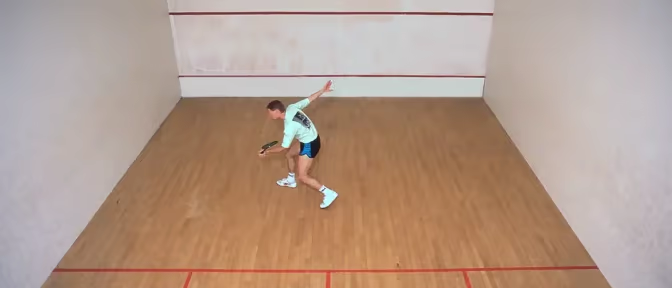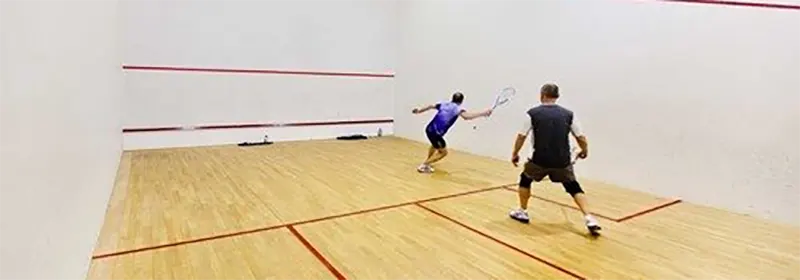17 May 2022 / 3-Min Read / Translate
I often liken great squash footwork to dancing. Being light on your feet, able to move as if you were gliding and being able to adapt very quickly are key elements to a great dancer.

So does that means that you have to be naturally talented? No, it can be learnt by most people, but let’s be honest, some people have no rhythm, and those people will probably never be great movers, either on a dance floor or a squash court!
Back to the question though. Getting stronger by doing leg and core strengthen exercises will help, but what you really need to do is called “Ghosting”. Ghosting is like shadow boxing; it’s moving around the court WITHOUT a ball or opponent and just focusing on how you move.
Just like any skill, you need to start slowly until it feels more natural and then increase the speed. Not too slowly though as it won’t be natural. Here are three objectives for you to focus on: Firstly, start each movement with a little jump, with your feet just wider than your shoulders. This is called the Split-Step and is used to ensure you move quickly in the right direction. Lastly, make the final step quite long. This will ensure you transfer your weight into the ball and give you more options when hitting the ball.
BUT WAIT! What’s the third you ask? Well, the middle objective is to use medium length strides that allow you to reach somewhere quickly but also allow you to adjust so that your final step is the longer one. Make sure you move back to the T quite quickly, but DO NOT turn and run forwards – move backwards as this will give you the most adaptability when it comes to changing directions.

Okay, so now we know WHAT to do, HOW do we do it? A lot depends on your fitness level, but make sure you Heat Up properly before you start your ghosting session or at the very least ease into it slowly. I suggest you do 30 seconds ghosting, 20 seconds rest. Do that combination for 10 times, then take a few minutes rest and do it once it twice more.
Use a simple star pattern in any order: the two front corners, the two back corners and two side to side movements.
Great footwork is like dancing: it takes dedicated practice, focusing on precision, agility and lightness, not just speed.